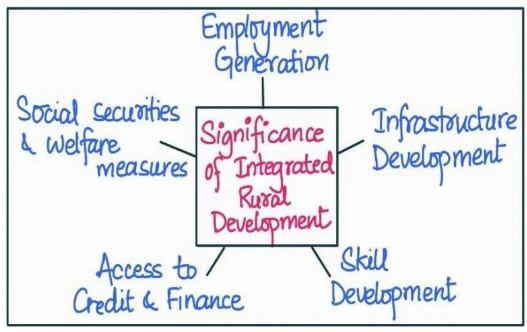Answer:
Approach:
|
Introduction:
The Indus Valley Civilization is one of the world’s oldest urban civilizations. It is known for extensivenplanning, consideration for the environment in planning etc. and offers valuable lessons for sustainable development practices in modern societies.
Body:
Lessons that can be derived from Indus Valley Civilisation:
 Prioritise mixed-use development: Planned city of Mohenjo-daro in the Indus Valley had a highly organised layout, with separate residential, commercial, and administrative areas.
Prioritise mixed-use development: Planned city of Mohenjo-daro in the Indus Valley had a highly organised layout, with separate residential, commercial, and administrative areas.Conclusion:
By incorporating these lessons from the Indus Valley Civilization, modern societies can strive for sustainable development, ensuring the well-being of current and future generations while preserving and protecting the environment, and heading towards SDG goals.
To get PDF version, Please click on "Print PDF" button.
Safe Processing Matters More Than Zesty Flavours
Centre’s Chandigarh Call Deepens Punjab’s Anxi...
How The New Labour Codes Can Transform Enterprise ...
Asim Munir Merciless Coup De Grace To PakistanR...
Supreme Court Has Created Grounds For More Centre-...
Is Federalism In Retreat Under Single Party Hegemo...

<div class="new-fform">
</div>
https://uploads.disquscdn.com/images/35dbe2fda45855e236852a44bc9034b00f1413a52d33a639db548e4108c0ae0e.jpg https://uploads.disquscdn.com/images/0603ed2207aea093cb5d415343e2d8b888e04e46a1b9f6c63bf41ceb50912fc4.jpg
https://uploads.disquscdn.com/images/3d4de27890568ad70504bf08e8d6d8e7a80b4f8ae86ecb54e7d788e9e2671045.jpg https://uploads.disquscdn.com/images/af7d9de061c1173c3c7e5067062a402b8cc6048786ca8a879c5c2e202de253b3.jpg
https://uploads.disquscdn.com/images/baafe891ccfdc08997b3bcab016165fd904d487a38b0ac2a343d703555c79012.jpg https://uploads.disquscdn.com/images/7073cf3359d429c26450a49bb9d38124cc33bfe68773b2046372149dc13c24c9.jpg
https://uploads.disquscdn.com/images/930d2ec57fc23d4ae57810710ae69ade1162eb73415b39cb78281b9493ed1413.jpg https://uploads.disquscdn.com/images/e1ea6978d0f41553f5f9f6daa68fa43ae1f0a2363112c65ae2ddec4c2f6a1084.jpg
https://uploads.disquscdn.com/images/db748a845cf1427997c783e70983fee8656118296d72ff4b317cb1b921ecdeaa.jpg https://uploads.disquscdn.com/images/852927a4da7f635b63d7ebb1ee509e001e3525bc6a7f344152542749917ce95e.jpg